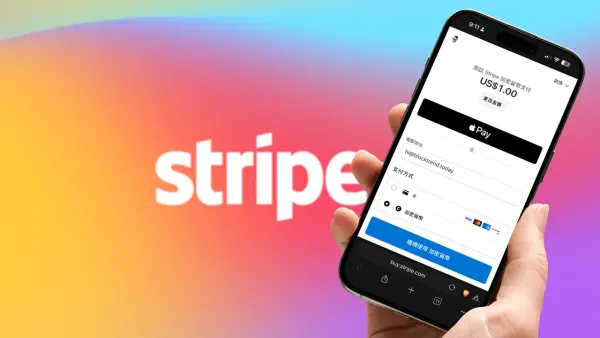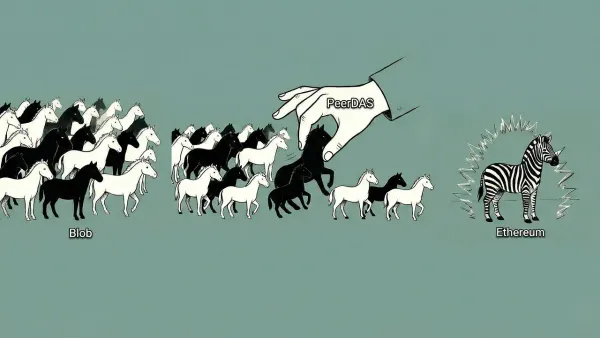Saturday Members Meetup | Launching a Web3 Badminton Club: “Smash with Vitalik”

GM,
Two upcoming events: a badminton session (April 8) at 1 PM at Taipei Datong Sports Center, and a member meetup this Saturday (April 12) at 2 PM at MaiCoin HQ.
Let’s start with Saturday’s member meetup. Blocktrend has received sponsorship from the Base Meetup, and with Ethereum’s upcoming Pectra upgrade¹, I’ll be sharing the latest updates and guiding attendees through hands-on use of Coinbase’s newly launched smart wallet. There will also be a crypto airdrop segment—perfect for those who’ve never created a wallet before.
Member registration for the meetup opens today, and you're welcome to bring a guest. We’ll open spots to free subscribers on Thursday. Now to the main topic. Over the Qingming holiday, I launched a Web3 badminton club called “Shuttle with Vitalik”—and in just a few days, 60 people have already joined. Starting this club was a direct action I took after attending last week’s ETHTaipei series of events. Here’s how it all began.
Block Space
This year’s ETHTaipei event left me feeling energized, but I was slightly disappointed by Vitalik Buterin’s keynote topics. It’s not that the content wasn’t good—it just didn’t align with the issues that people seem to care about most right now. Vitalik gave two talks: one on the Ethereum L2 scaling roadmap, and another on funding mechanisms for open-source projects. But the question that kept running through my mind was: Are these really the most important topics for Ethereum at this moment?
Chris Dixon, author of Read Write Own, once said that blockspace will be the most fiercely contested scarce resource 2 over the next decade. Blockspace is like the “bandwidth” of the blockchain. Back in the dial-up internet era, limited bandwidth meant platforms like YouTube or Netflix couldn’t exist. Similarly, in the early days of blockchain, Ethereum faced a “bandwidth” problem—when blockspace was tight, gas fees for a single transaction could soar to hundreds of dollars. The system was essentially pricing users out due to limited capacity.
Over the past ten years, this lack of “bandwidth” made it impossible for blockchains to support higher-throughput applications like reading, social networking, or entertainment. Instead, the on-chain ecosystem was dominated by DeFi, and sometimes even chaotic trends like SocialFi and GameFi—because if an application couldn’t generate income, people had no reason to use a “luxury chain.” In recent years, Ethereum has focused heavily on scaling. A variety of Layer 2 (L2) solutions have emerged, aiming to increase blockspace and reduce gas fees. The goal is to move beyond profit-driven use cases and enable fun, everyday applications—even if they aren’t monetizable.
The good news is that by 2025, blockspace is no longer scarce. But perhaps the pendulum has swung too far. Many people now mock Ethereum’s sluggish price and ultra-low gas fees as signs that barely any activity is happening on-chain. It’s like laying down fiber-optic cables everywhere, only to find that nobody’s actually using computers. Meanwhile, Vitalik’s keynote this year focused on making that “fiber” even faster—which, to some, felt like missing the point.
In my view, the real challenge today isn’t a lack of blockspace—it’s a lack of demand. Why aren’t people interested in using on-chain services? The answer is simple: they’re just not good enough. If I weren’t researching for articles, I probably wouldn’t want to use many of them either. Compared to their Web2 counterparts, most Web3 products simply tack on cryptocurrency without offering any meaningful improvement to the core experience—and sometimes, they’re even worse. This is one of the most common mistakes Web3 builders make.
Defensive Technology
Chung-Chien Kao, founder of LikeCoin, hit the nail on the head: “The use cases for AI are easy to understand, but the meaning of Web3 is hard to grasp.” I think AI should be treated like a fill-in-the-blank. Applied to the Matters writing platform, it becomes: “Blogging is easy to understand, but the meaning of Web3 is hard to grasp.” Everyone knows they can blog on Matters, but only a handful of authors truly understand what it means for their articles to be automatically uploaded to IPFS 3, or how that actually matters.
Web3 is often built for the “just in case,” while the only thing people clearly see is the “one-in-ten-thousand” use case. Under pressure from reality, founders end up leaning on token price to justify their existence. Price is the most tangible form of that “one-in-ten-thousand,” so it’s no surprise that speculation runs rampant. This is a structural issue within Web3. So, what can we do about it?
I believe Web3 should not be the core selling point of a product, but rather a value-adding feature that shines quietly in the background. Think about privacy or democracy—both are defensive mechanisms. But no one wants to use an ultra-private email provider that fails to deliver messages. People can still live relatively normal lives in places like China, even without privacy or democracy. If the salary is high enough, many are still willing to make that trade-off. Web3, similarly, is a hidden value—something to be proud of, but rarely strong enough to sell a product on its own.
To put this idea into action—to create demand for blockspace—I decided to found a badminton club called “Smash with Vitalik” (羽 V 神同行). The goal? Invite everyone to play badminton together, and tuck Web3 quietly into the background.
Smash with Vitalik
The name of this club was contributed by Blocktrend member Huang Dou Ni, inspired by the Korean movie Along with the Gods (與神同行).
The club’s logo features Ethereum co-founder Vitalik Buterin holding a badminton racket. I have no idea if Vitalik has ever actually played badminton, but in the spirit of “fake it till you make it,” I hope that a year from now we can get him to pick up a racket for a match—or at least take a photo with one 😂.

The club hosts weekly badminton meetups in Taipei—two hours per session, doubles format. Each participant pays NT$250 (which covers court rental and shuttlecock fees), and payments are accepted only in cryptocurrency. For every session, a unique POAP (Proof of Attendance Protocol) is issued, which can be claimed for free upon check-in. Collect enough POAPs and you can redeem them for team jerseys or tournament registration.
What sets this club apart from other badminton groups is its active adoption of Web3 tools. The club group chat is hosted on the encrypted messaging app Signal—yes, the same app used by U.S. White House officials to discuss bombing targets in Yemen, except we use it to schedule badminton matches. We also use the same tool favored by North Korea’s elite hackers for laundering money—cryptocurrency—but in our case, it's used to buy shuttlecocks and pay court fees (via a crypto debit card). More Web3 tools will be gradually introduced based on the club’s needs, bringing blockchain into daily life in a fun, practical way.
Smash with Vitalik doesn’t lead with crypto—it uses badminton as a way to sneak Web3 tools into the real world. It’s a sports club created by Web3 enthusiasts, but the long-term goal is to attract people who have no interest in crypto or blockchain. They’ll show up simply because they want to play badminton—and end up learning a bit of Web3 along the way. I got into crypto through mining. Many others probably joined for the money too. But now that blockspace is no longer scarce, I hope the next wave of people enters the space through sports.
Smash with Vitalik isn’t just a pun—it’s about keeping up with his spirit through real-world applications. Especially when crypto prices dip, at least you can still say: “Health is the greatest wealth.” 😂
After I introduced the Smash with Vitalik badminton club, some friends who had never used Signal or owned any cryptocurrency signed up for the event. Others in the community have started organizing a hiking group called “WebMountain”, and even issued a “WebMountaineer Certificate” ⛰️ using a digital credential wallet.
1 Ethereum’s Pectra Upgrade (Part 1): Giving Smart Features to Private Key Wallets
3 The InterPlanetary File System: How Web3 Can Respond to the War of Attrition in Cyber Attacks?





